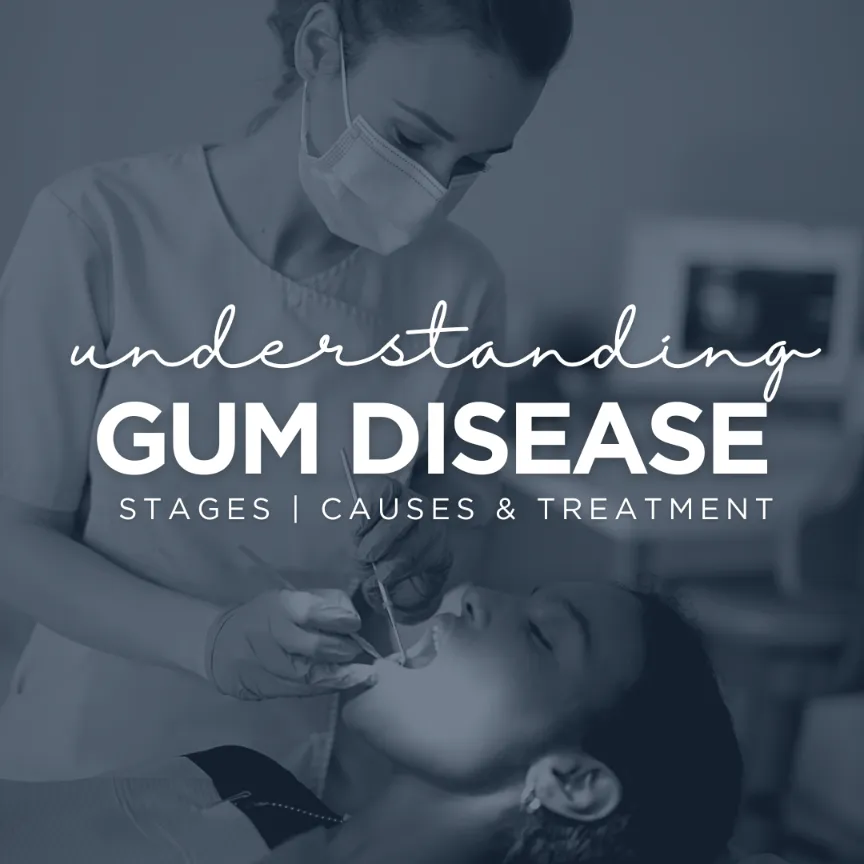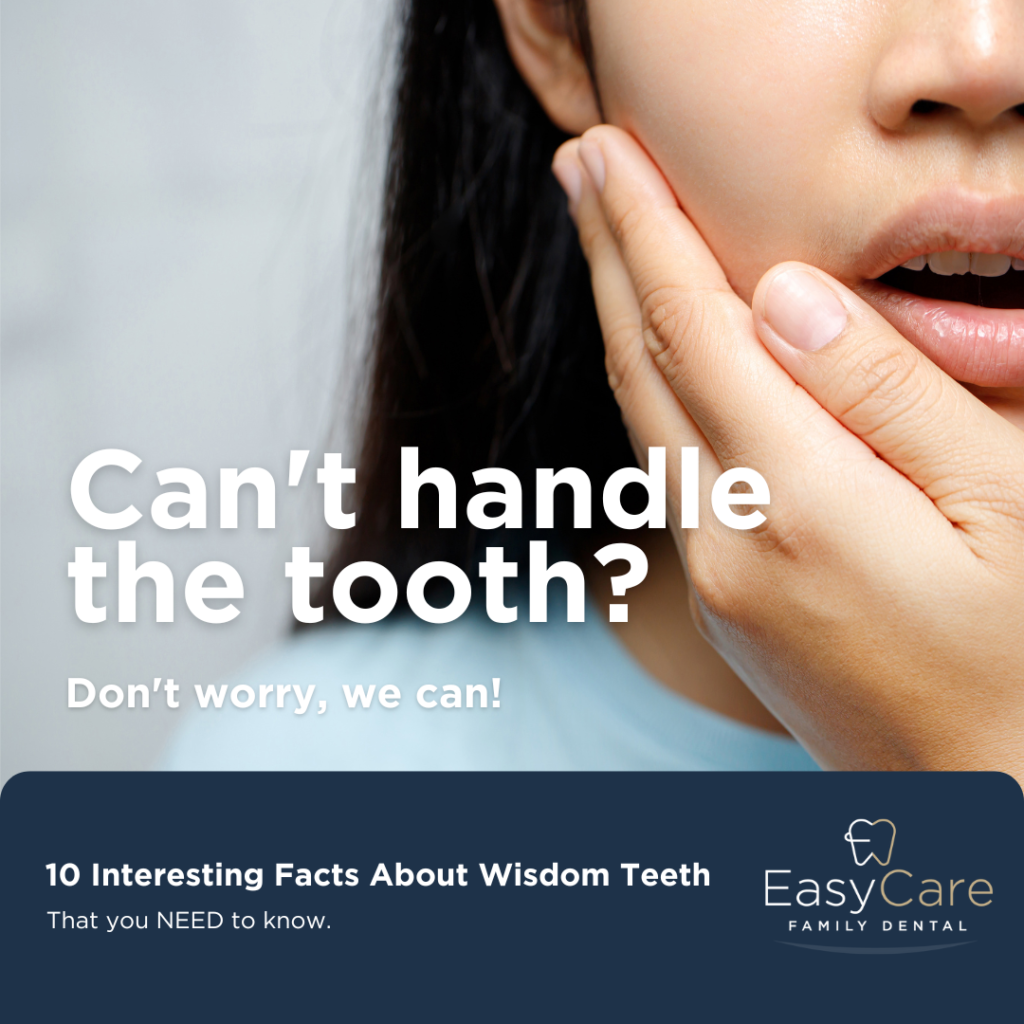Gum Health Matters: Preventing Gum Disease in East Brisbane
Bleeding gums, bad breath or loose teeth? We help prevent, diagnose and treat gum disease - with clear next steps and gentle care in East Brisbane.

Why Gum Health Matters
Gum disease can quietly damage the support around teeth. Early action helps prevent tooth mobility and tooth loss.
Inflamed gums can affect your overall wellbeing, especially alongside conditions like diabetes or during pregnancy.
Daily cleaning plus professional maintenance keeps gums stable long-term - and reduces flare-ups.
Signs of Gum Disease - and How to Prevent It
- Bleeding gums when brushing or flossing
- Persistent bad breath or a bad taste
- Swollen, tender or receding gums
- Loose teeth or changes in bite
Prevention tips
Brush twice daily, floss (or use interdental brushes) daily, and keep regular check-ups. Professional cleans remove tartar that home care cannot.
Gum Disease Treatment Options
Scale and polish to remove plaque and tartar above and below the gumline.
Root surface debridement for deeper pockets to help gums reattach and settle.
Personalised routines and product guidance to control inflammation and reduce recurrence.
What to Expect - Step by Step
1. Assessment: We check gum health, pocket depths, bleeding points and risk factors - X-rays if clinically needed.
2. Treatment: Gentle scaling or deeper cleaning depending on severity and comfort needs.
3. Maintenance: Scheduled reviews and supportive advice to keep gums stable long-term.
EasyCare Family Dental - Conveniently Above Seasons IGA East Brisbane

Serving East Brisbane and Surrounds
Looking for gentle gum care in East Brisbane? We are close to Mowbray Park and the Mowbray Park Ferry Terminal - with easy access and free undercover parking under Seasons IGA East Brisbane.
- East Brisbane
- Kangaroo Point
- Woolloongabba
- Norman Park
- Brisbane CBD
What Our Patients Say
As soon as I sat down with Dr. Majid and opened my mouth, he immediately identified the problem. I felt a huge sense of relief and happiness—finally, someone was able to pinpoint the issue, quickly and accurately.. I was genuinely impressed by his skill, knowledge, and sharp diagnostic ability.
Throughout the entire procedure, Dr. Majid was incredibly patient and considerate. He made sure I was comfortable, offering breaks and consistently checking in to see how I was doing. I also noticed that the equipment they used seemed modern and up-to-date, which I believe adds an extra layer of capability to any practitioner.
The nurse, Matina, was equally kind and skilled. Her support during the process made the experience even more comfortable and reassuring.
I’m truly glad to have found a dentist I can trust. From now on, both myself and my family will be regular patients at Dr. Majid’s clinic.
Majid is gentle, patient, considerate, and responsive to your reactions throughout the entire process, offering you little breaks to make things more comfortable, and not laying on the flossing guilt too thick.
I also have never had the impression that he is trying to find ways to upsell or make extra dollars from you unless it's necessary, unlike past dentists. Very honest, trustworthy, and reliable, and I'll be sticking around!
I definitely recommend!
This was my first experience with Dr. Majid. When I arrived, Charlotte, the assistant, welcomed us warmly and we quickly filled out a patient form. The reception process was very fast, and I think I saw the doctor in less than 5 minutes, which really helped reduce my stress.
At first impression, Dr. Majid seemed very precise and professional. He examined me carefully, took an X-ray, and explained the treatment plan in great detail. The anesthetic injection was done so smoothly that I didn’t even notice it—although he told me it might hurt, I was still waiting for the pain when he suddenly said it was done!
Dr. Majid restored my tooth so well that I think it looks even better than it did originally. I had no pain at all in the following days. The price he gave me was also very reasonable—not too high and not too low.
Today I even booked an appointment for my wife. The clinic is very clean and modern. Overall, it was an excellent, pain-free experience. I really liked it and I think we’ve found our family dentist.
Highly recommended! ⭐⭐⭐⭐⭐
I feel immensely less anxious about going to the dentist in future, and will 100% be using EasyCare for the foreseeable future!
What truly stood out was the personalised follow-up after my procedure. Practice staff reached out to check on my progress. This level of attentiveness made it clear that they genuinely care about their patients' well-being and satisfaction.
I highly recommend Easycare Family Dental for anyone seeking top-notch dental care with a personal touch. Their commitment to quality service, excellent communication, and thoughtful follow-up truly sets them apart.
The team was incredibly professional and made sure everything was clearly explained, leaving no room for confusion or uncertainty. Their attention to detail and patient comfort was evident throughout the procedure, which was entirely pain-free.
A thoughtful follow-up call the next day to check on how I was doing truly reflected their commitment to patient care. The level of professionalism, kindness, and expertise at EasyCare Family Dental made this experience far better than I had anticipated. I highly recommend them to anyone looking for quality dental care in a welcoming environment! I was looking for a new dental practice and I found one.
Look no further if you’re in the market for a new dentist.
Dr. Majid was incredibly compassionate and took the time to explain every step of the procedure. He made sure I was comfortable throughout and answered all my questions in detail, which helped ease any concerns I had. The level of care I received was outstanding, and I truly appreciate how much they prioritise patient comfort and understanding.
Highly recommend this practice for anyone looking for a dentist who is not only skilled but also genuinely cares about their patients!
Many thanks for fixing my broken tooth
Kind regards
Don Millar
Highly recommend this dental practice and I will definitely return.
Dr. Majid is not only a skilled dentist but also incredibly attentive to patient needs. They took the time to explain each procedure thoroughly and ensured I felt comfortable every step of the way. Their expertise was evident in how efficiently and painlessly they handled my dental issues.
The clinic itself is state-of-the-art, equipped with the latest technology, which further enhanced my confidence in the care I was receiving. The staff were always courteous and helpful, making each visit a pleasant experience.
Overall, I highly recommend Dr. Majid to anyone seeking top-notch dental care in a welcoming environment.
Dr. Majid Serpoosh was so skilled and his knowledge is second to none and he goes the extra mile for his patients.
Highly recommend him to everyone.
Dr Majid’s assistants are very friendly and have a caring manner - just what you need when a little nervous. Sometimes, Dr Majid’s wife acts as his assistant, who is also a dentist! So you get two dentists for the price of one! Easy Care Family Dental have recently moved to new premises, with state of the art equipment. Now further for me to travel, but I consider that irrelevant when considering the treatment which I receive. Definitely recommended.


